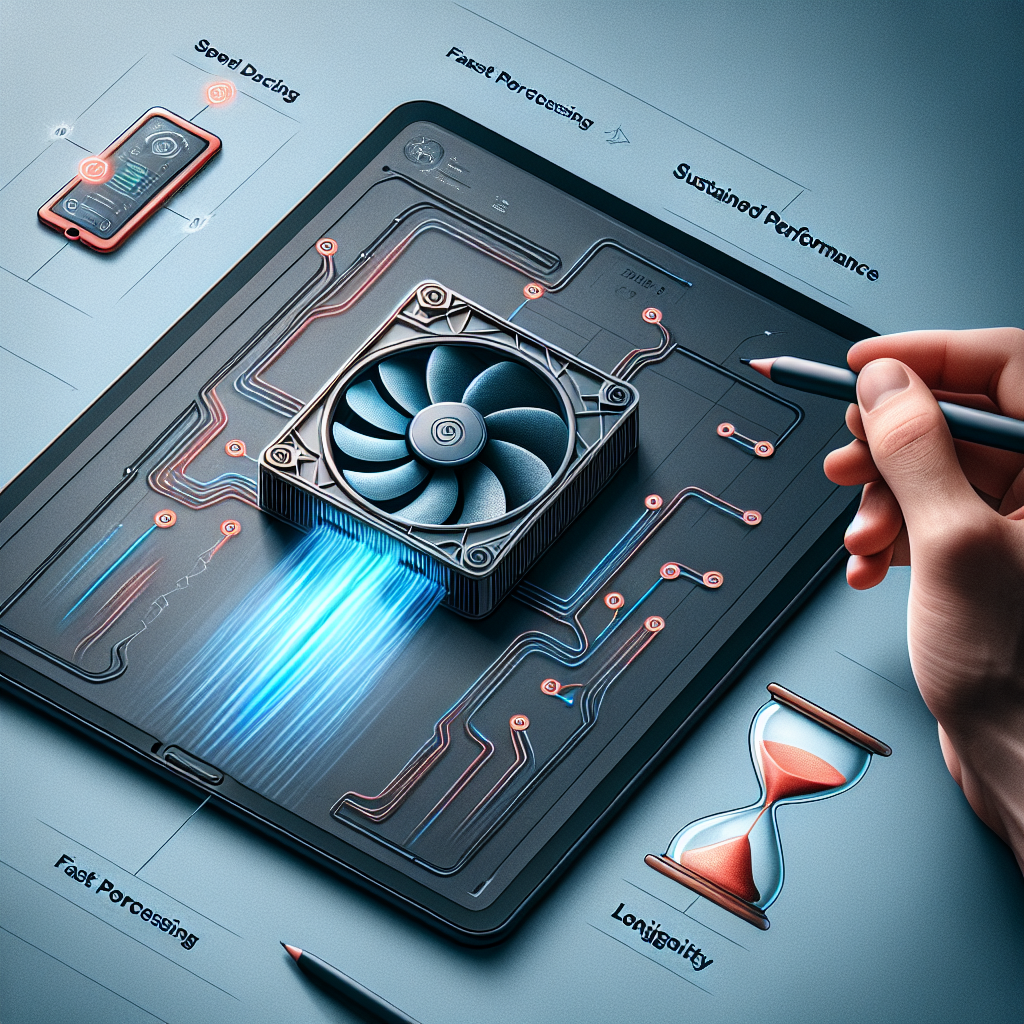With the rapid advancement in technology, tablets have become increasingly powerful, offering performance levels that were once only achievable by laptops and desktops. One notable feature of high-performance tablets is the inclusion of built-in cooling fans. But why do some tablets need these fans, and how do they contribute to sustained performance? This article delves into the reasons behind the inclusion of built-in cooling fans in tablets, the benefits they offer, and their impact on user experience.
The Necessity of Cooling in Modern Tablets
As tablets become more advanced, their hardware generates more heat, especially during intensive tasks like gaming, video editing, or running complex applications. Without adequate cooling, this heat can degrade performance and damage internal components over time.
Heat Generation and Its Sources
- CPU and GPU: The central processing unit (CPU) and graphics processing unit (GPU) are the primary sources of heat in modern tablets. These components handle the bulk of processing tasks and can get extremely hot during heavy usage.
- Battery: While not as significant as the CPU and GPU, the battery can also generate heat, especially during charging or extended use.
Consequences of Overheating
Overheating can lead to various issues, such as:
- Thermal Throttling: To prevent overheating, the system reduces the performance of the CPU and GPU, leading to slower processing speeds and decreased performance.
- Hardware Damage: Prolonged exposure to high temperatures can damage internal components, reducing the lifespan of the device.
- Reduced Battery Efficiency: Excessive heat can degrade the battery over time, leading to shorter battery life and the need for more frequent replacements.
The Role of Built-in Cooling Fans
To mitigate the issues caused by heat generation, some tablet manufacturers have started incorporating built-in cooling fans. These fans offer several advantages:
Benefits of Built-in Cooling Fans
- Sustained Performance: By efficiently dissipating heat, cooling fans help maintain optimal performance levels, even during intensive tasks.
- Extended Hardware Longevity: Keeping internal components cool helps prevent damage and extends the lifespan of the device.
- Improved User Experience: Users can enjoy smoother and more responsive performance without the interruptions caused by thermal throttling.
Technological Advancements in Cooling Systems
Modern cooling systems for tablets are designed to be efficient and unobtrusive. Some of the advancements include:
- Compact Fan Designs: Advanced engineering allows for smaller, more efficient fans that fit within the slim profiles of modern tablets.
- Smart Fan Control: Intelligent algorithms control fan speed based on the device’s temperature, ensuring that fans operate only when necessary, reducing noise and power consumption.
- Heat Pipes and Vapor Chambers: These technologies help conduct heat away from critical components to the fan, enhancing the cooling efficiency.
Case Studies: Tablets with Built-in Cooling Fans
Several high-performance tablets have adopted built-in cooling fans to ensure sustained performance. Here are some examples along with their specifications:
| Tablet Model | CPU | GPU | Fan Technology |
|---|---|---|---|
| Microsoft Surface Pro 7 | Intel Core i7 | Intel Iris Plus Graphics | Hybrid Cooling (Active + Passive) |
| Lenovo ThinkPad X1 Tablet | Intel Core i5/i7 | Intel HD Graphics 620 | Active Cooling Fan |
| Asus ROG Flow Z13 | Intel Core i9 | NVIDIA GeForce RTX 3050 Ti | Dual Fan System |
Impact on the Market and User Preferences
The inclusion of built-in cooling fans in tablets has significantly impacted the market and user preferences:
Market Trends
The demand for high-performance tablets is on the rise, driven by users who require portable devices capable of handling demanding tasks. As a result, tablets with advanced cooling solutions are becoming more popular.
User Preferences
Users now prioritize performance and reliability, making tablets with built-in cooling fans more attractive. The ability to run intensive applications without performance drops is a significant selling point.
Conclusion
The inclusion of built-in cooling fans in tablets addresses the critical issue of heat management, ensuring sustained performance, extended hardware longevity, and improved user experience. As technology continues to advance, we can expect further innovations in cooling solutions, making high-performance tablets even more efficient and reliable.

